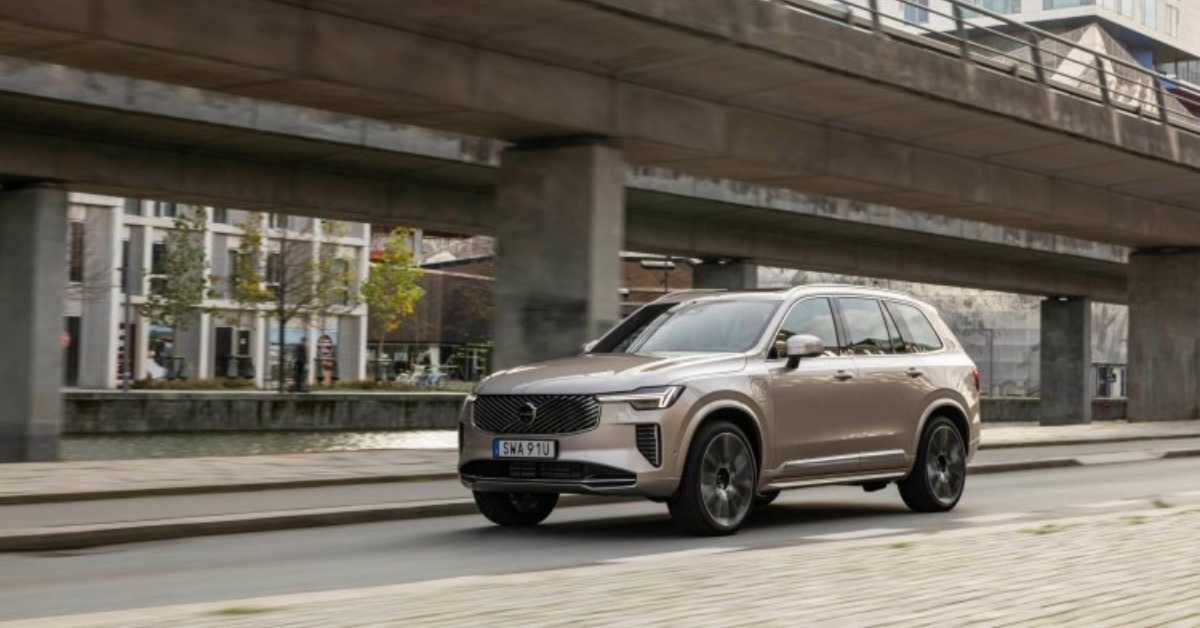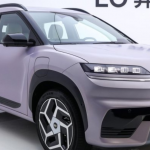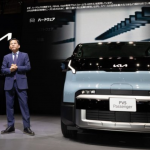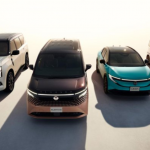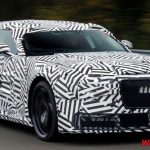The global automotive industry is in the midst of a transformation, shifting from fossil-fuel-powered vehicles to electric mobility solutions. Among the many players in this transition, Volvo has consistently stood out for its strong commitment to sustainability, electrification, and carbon neutrality. Recently, the Swedish automaker marked a historic milestone by announcing that it has successfully placed one million plug-in hybrid vehicles (PHEVs) on the road worldwide.
This achievement is not just a number—it is a clear indicator of how quickly consumer preferences are evolving and how seriously automakers are pushing forward with cleaner, greener technologies. Let’s take a deep dive into what this milestone means for Volvo, the automotive industry, and the future of sustainable mobility.
Volvo’s Journey Towards Electrification
Volvo Cars, known for its Scandinavian design and focus on safety, has also become a pioneer in the electrification of vehicles. The company’s electrification journey started years ago, well before most traditional automakers had a clear roadmap for electric vehicles (EVs).
In 2017, Volvo became the first major carmaker to commit to phasing out purely combustion-engine cars, declaring that every new model launched from 2019 onward would include an electric motor, either as a hybrid or a fully electric powertrain. This bold statement was a turning point in the automotive industry, sending a signal to competitors and governments alike that the shift to clean energy in mobility was inevitable.
By offering plug-in hybrid versions across its lineup, from SUVs like the XC60 and XC90 to sedans like the S60 and S90, Volvo provided consumers with a flexible choice—a bridge between traditional fuel and full electrification. This strategy allowed hesitant buyers to experience the benefits of electric driving without the range anxiety associated with early fully electric cars.
One Million Plug-In Hybrids: Why This Matters
Reaching one million plug-in hybrids on the road is more than just a sales figure. It represents:
- Consumer Confidence in Hybrid Technology
Plug-in hybrids allow drivers to experience electric mobility while retaining the security of a petrol engine for longer trips. Volvo’s ability to sell one million PHEVs shows that drivers trust the brand’s technology and are ready to make the shift toward electrification. - A Significant Reduction in Emissions
Every plug-in hybrid on the road reduces overall CO₂ emissions when compared to conventional vehicles. By hitting this milestone, Volvo has significantly contributed to lowering the carbon footprint of global transportation. - A Step Toward Volvo’s Climate Neutrality Goals
Volvo has pledged to become a fully electric car company by 2030 and achieve climate neutrality by 2040. The success of its plug-in hybrid program proves that the company is on the right track to meet these ambitious targets. - Global Impact
The milestone also highlights the growing adoption of green technologies in different regions. From Europe, which has stringent emissions norms, to North America and Asia, Volvo’s PHEVs have gained acceptance across diverse markets.
Key Models Driving the Success
Several Volvo models have been instrumental in achieving this plug-in hybrid milestone:
- Volvo XC60 Recharge – A best-selling SUV that blends luxury, safety, and electrification.
- Volvo XC90 Recharge – The flagship SUV that offers families both space and sustainability.
- Volvo S60 and S90 Recharge – Premium sedans catering to business and executive customers who value both performance and environmental responsibility.
- Volvo V60 Recharge – A stylish wagon that has proven popular in Europe.
By integrating plug-in hybrid technology across its product line, Volvo ensured that every type of customer—from families to professionals—had access to an electrified model.
Volvo’s Strategy: Plug-In Hybrids as a Bridge to Full EVs
While many automakers are directly leaping into fully electric vehicles, Volvo has strategically used plug-in hybrids as a transition technology. This approach has multiple benefits:
- Eases Consumer Transition – Buyers still nervous about charging infrastructure or range limitations can enjoy electric driving for short trips while keeping the petrol engine for longer journeys.
- Boosts Market Penetration – By offering hybrids across all model categories, Volvo captured customers who may not yet be ready for a full EV.
- Builds EV Ecosystem – Volvo is using insights from hybrid users to refine its electric models and charging solutions.
The Road Ahead: Volvo’s EV Vision
Hitting the one-million PHEV milestone is impressive, but for Volvo, it’s just one part of a bigger plan. The company has already launched successful full-electric models like the Volvo XC40 Recharge and the Volvo C40 Recharge, and more EVs are on the horizon.
Looking ahead, Volvo has committed that by 2030, every car it sells will be fully electric. This vision is supported by several initiatives:
- Massive Investment in Battery Technology
Volvo is collaborating with battery suppliers to develop high-density, sustainable batteries that will increase range and reduce charging times. - Global Charging Infrastructure Expansion
The company is partnering with charging networks to make EV ownership more convenient worldwide. - Software and Connectivity
Volvo is focusing on smart software, over-the-air updates, and digital services to enhance EV ownership experiences. - Sustainability in Manufacturing
Beyond vehicles, Volvo aims to reduce carbon emissions across its entire supply chain, including manufacturing and logistics.
How This Milestone Shapes the Industry
Volvo’s announcement of one million PHEVs on the road sends a strong message to the automotive world. It demonstrates that the shift to electrification is not only possible but profitable. Other automakers may now accelerate their electrification strategies to compete.
Additionally, this achievement will encourage governments and regulators to push for stricter emission norms, knowing that companies like Volvo are already capable of meeting ambitious sustainability goals. For consumers, it reinforces confidence in hybrid and electric technologies, accelerating the overall adoption of clean vehicles.
Challenges Ahead
Despite the celebrations, challenges remain:
- Charging Infrastructure – Many regions still lack the widespread charging networks required for seamless EV adoption.
- Battery Recycling – As plug-in hybrids and EVs grow in number, sustainable recycling of batteries will be crucial.
- Affordability – PHEVs and EVs remain more expensive than traditional vehicles, which could slow adoption in cost-sensitive markets.
Volvo acknowledges these challenges but continues to invest in research, development, and partnerships to overcome them.
Conclusion
The milestone of one million plug-in hybrids on the road marks a defining moment in Volvo’s history and the broader journey of the automotive industry toward a sustainable future. By combining Scandinavian design, advanced safety, and a deep commitment to the environment, Volvo has established itself as a leader in green mobility.
As the world moves closer to an all-electric future, this achievement shows that the path to sustainability is not just a vision—it is already becoming a reality. With its ambitious 2030 electrification target, Volvo is well-positioned to remain at the forefront of this transformation.

Hello, my name is Muskan Kumari and I am an experienced Digital Marketer. I have been blogging for the last 3 years and I have special interest in SEO. Here I give you easy bikes and writes easy-to-understand reviews and news about the latest bikes, helping readers choose the best options.. My aim is to always provide you with accurate, new and useful information.
